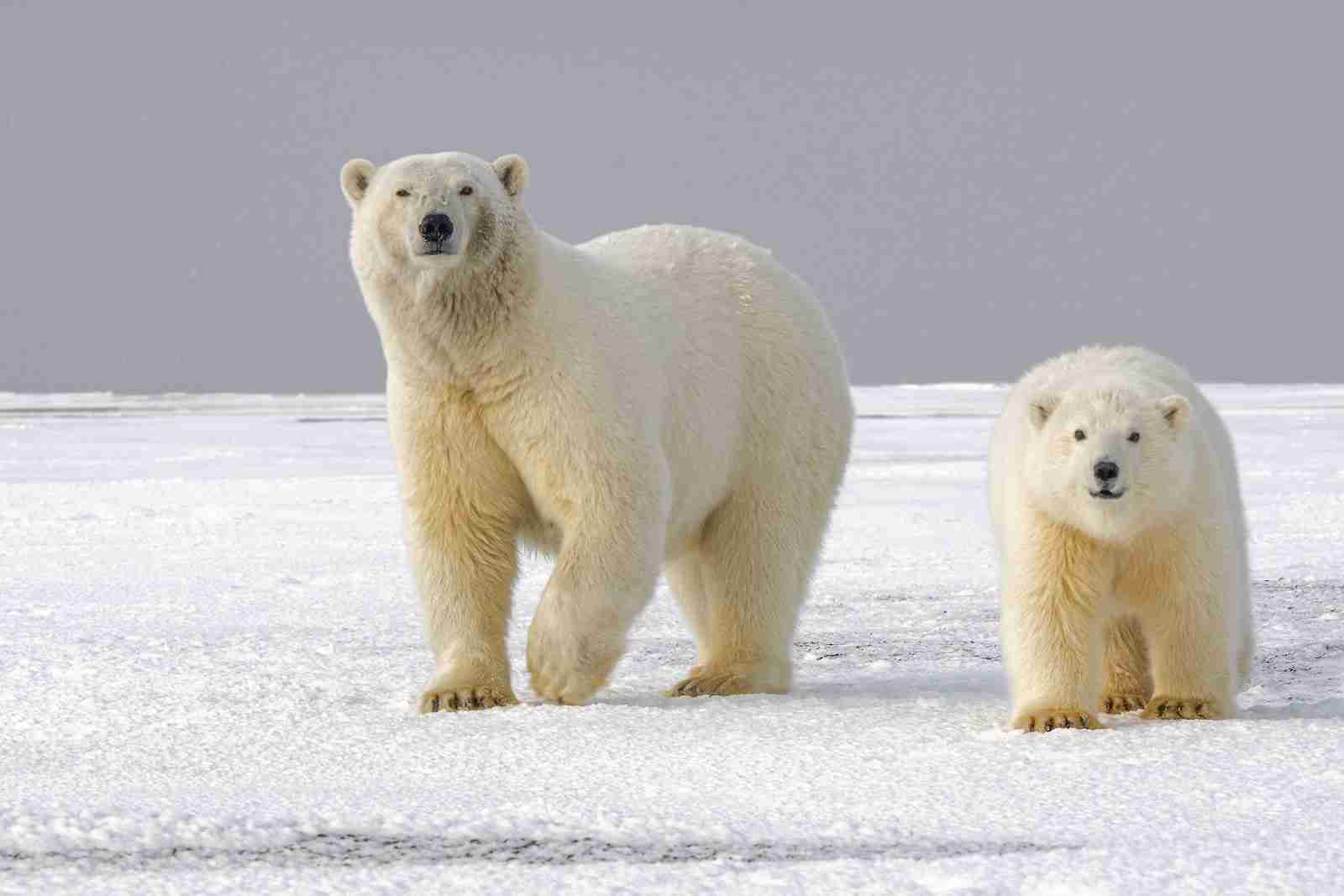25 Fun Facts About Polar Bears: They Aren’t Truly White
1. The Polar bear is the only bear species recognized as a marine mammal.
The Polar bear holds a unique spot in the animal kingdom. While we often think of bears living in forests or mountains, the polar bear is different.
It’s the only bear species labeled as a marine mammal because it depends heavily on the marine environment.
They spend a significant portion of their life on sea ice, hunting for seals, their primary food source.
2. Polar bears primarily live in the Arctic Circle.
Polar bears primarily inhabit areas within the Arctic Circle, spanning countries like Canada, Russia, Greenland (part of Denmark), and Norway.
These nations are their main stomping grounds, offering vast icy territories for them to roam, hunt, and thrive.
3. Polar bear fur isn’t white it’s translucent.
Polar bears, often perceived as snow-white giants of the Arctic, hold a surprising secret. Their fur, contrary to popular belief, isn’t white at all it’s translucent.
Each individual hair is clear, resembling a hollow tube. When sunlight hits these tubes, it scatters, giving off the white appearance we associate with them.
4. Polar bears have black skin underneath their fur.
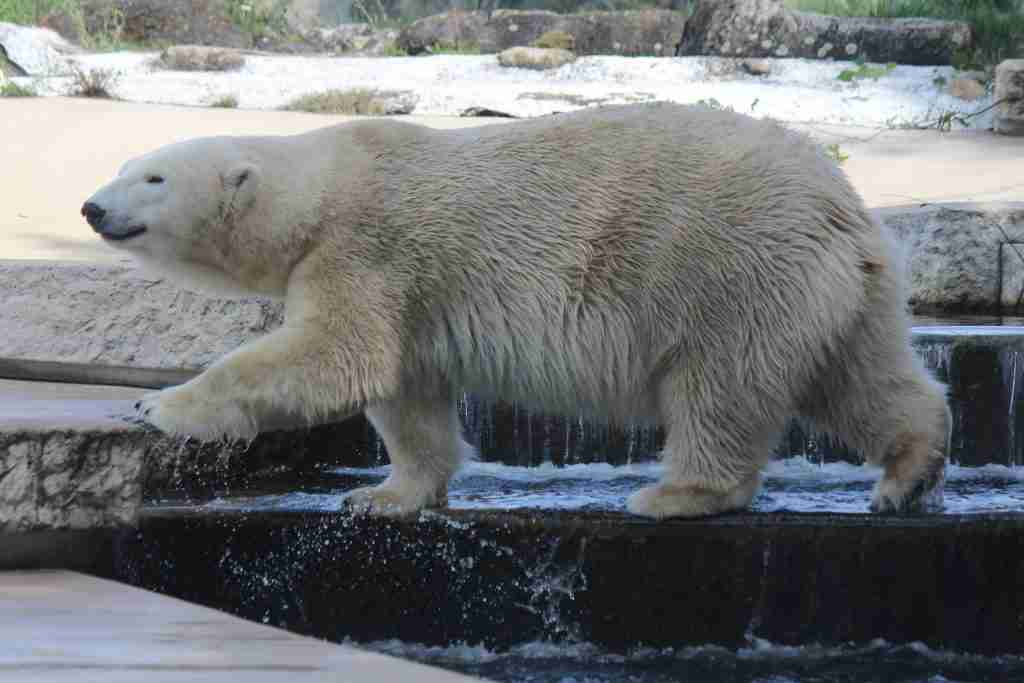
Beneath the deceptive cloak of their translucent fur, polar bears hide an unexpected truth their skin is pitch black.
This dark coloration aids in absorbing and retaining heat from the sun, a vital adaptation that helps them stay warm in the frosty Arctic climate.
5. Polar bear cubs weigh just over 1.5 pounds at birth.
When picturing the might and size of adult polar bears, it’s astonishing to learn that their cubs start life weighing 1.5 pounds or so.
This tiny beginning is a stark contrast to their eventual massive size, illustrating the remarkable journey these creatures undergo from vulnerable infants to Arctic giants.
6. Polar bears can swim for days without rest.
Imagine swimming for hours on end. Now, think of polar bears who can swim for days without taking a break. These incredible mammals are not just kings of icy terrains, but also seasoned swimmers.
They can cover vast distances in icy waters, showcasing their exceptional endurance and adaptability.
7. Polar bears’ primary diet consists of seals.
While many animals graze on land or hunt in forests, polar bears have a different favorite meal, seals. The Arctic waters serve as a dining table for these bears, with seals being the main course.
This preference isn’t just a matter of taste seals provide the essential fats and nutrients needed for polar bears to thrive in their cold environment.
8. Polar bears can reach up to 25 mph on land.
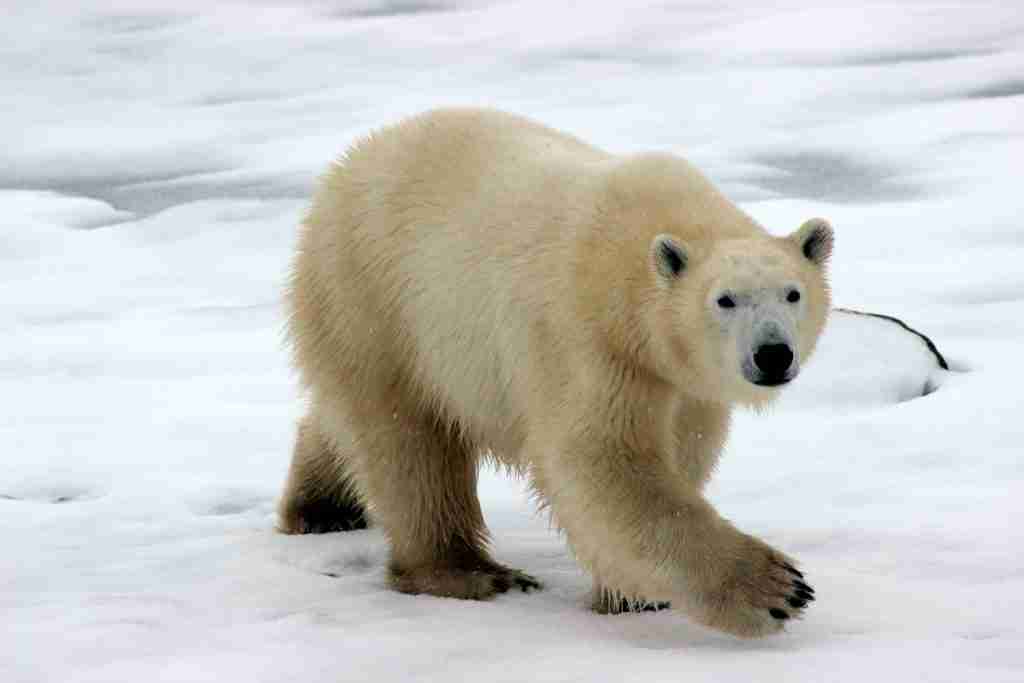
It’s easy to think of polar bears as slow-moving due to their hefty size, but you’d be mistaken. On land, these Arctic giants can achieve speeds of up to 25 mph, which is impressive.
This speed not only aids in hunting but also proves how versatile and agile they can be despite their massive stature.
9. Polar bear’s scientific name, Ursus maritimus, means maritime bear.
The scientific name for polar bears, Ursus maritimus, gives away a clue about their lifestyle. Translated, it means maritime bear, highlighting their deep connection with the sea.
This name perfectly encapsulates their oceanic adventures and how naturally they’re linked to the marine environment.
10. Polar bears do not hibernate like other bears.
Unlike their forest-dwelling relatives, polar bears don’t hibernate. Why? Because the icy Arctic environment offers a consistent food supply, primarily seals, throughout the year.
While other bears hibernate to conserve energy during food-scarce months, polar bears continue their hunt, taking advantage of the ever-present seal population beneath the ice.
11. Polar bears’ keen sense of smell allows them to detect prey nearly 10 miles away.
The Arctic might seem vast and empty, but for polar bears, it’s filled with the scent of potential meals. Boasting an extraordinary sense of smell, they can detect prey, like seals, from almost 10 miles away.
This powerful nose ensures their survival in a place where food isn’t always easy to spot.
12. Polar bears use an ice-breaking technique with their front paws while hunting.
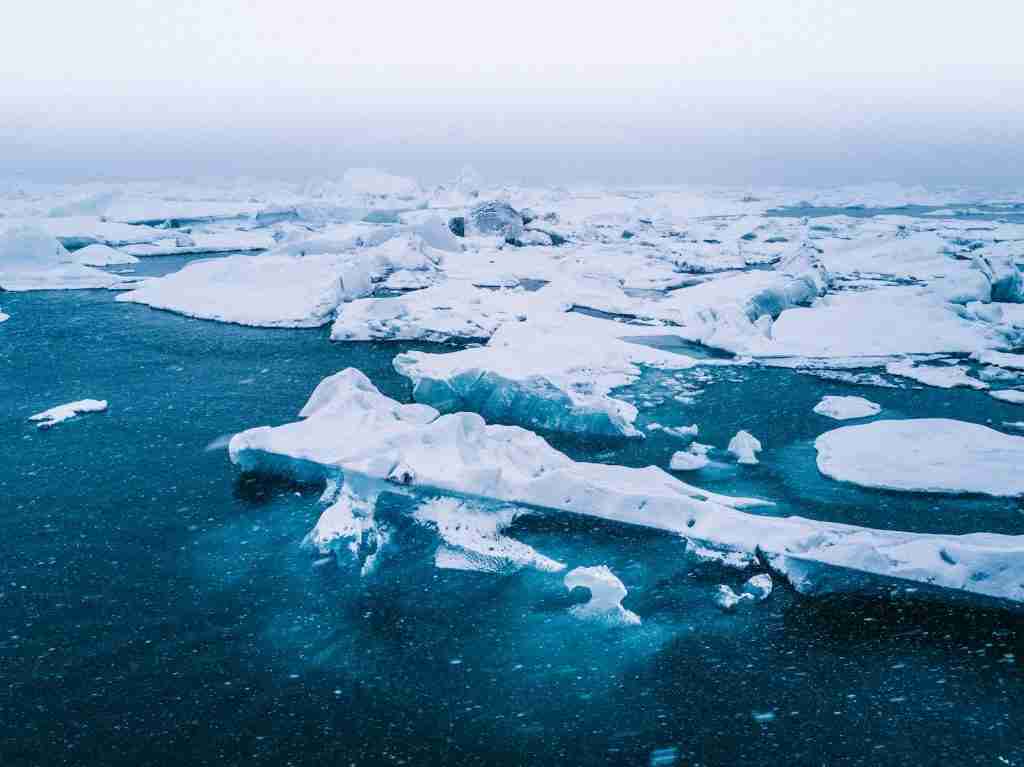
In the vast icy expanses of the Arctic, polar bears have developed a unique hunting method. When they detect a seal beneath the ice, they use their powerful front paws to smash through, creating an opening.
This ice-breaking technique is not just a display of strength but a strategic approach to accessing their primary food source in their frozen habitat.
13. Polar bear footpads have small bumps for traction on ice.
Ever wondered how polar bears move gracefully on slippery ice without slipping? Their footpads have the answer.
Equipped with small bumps or papillae, these footpads give polar bears the traction they need. It’s nature’s way of providing them with built-in snow boots, ensuring stable movement even on the slickest of terrains.
14. Adult male polar bears can weigh as much as 10 humans.
The sheer size of adult male polar bears is astounding. They can weigh up to 1,500 pounds, which is equivalent to the combined weight of 10 average-sized humans.
Their impressive bulk is a testament to their status as one of the Arctic’s top predators and their adaptability to a challenging environment.
15. polar bear’s liver contains toxic levels of Vitamin A.
Nature has its quirks, and in the case of polar bears, one such quirk is their liver. It contains extremely high levels of Vitamin A, so much so that it’s toxic to humans.
Consuming their liver can lead to vitamin A poisoning, a severe condition, underscoring the importance of understanding the unique biology of every creature.
16. A polar bear can consume up to 88 pounds of meat in a single meal.
Think of the biggest meal you’ve ever had. Now, compare that to a polar bear’s appetite. In just one sitting, a polar bear can gobble down up to 88 pounds of meat. That’s equivalent to eating over 350 regular-sized burgers in one go.
This massive intake is essential for them. In the harsh Arctic conditions, storing energy is crucial, and these big meals help them do just that.
17. Polar bears can cover 20-40 miles daily when necessary.
The Arctic might seem like an endless stretch of ice, but for polar bears, it’s a landscape to navigate daily. When the need arises, they can traverse an impressive 20 to 40 miles a day.
Whether searching for food or finding suitable territories, their strong limbs and boundless energy make these long treks possible.
18. Polar bears are excellent divers, reaching depths of up to 15 feet.
Polar bears aren’t just surface roamers of the Arctic they’re adept divers too. Equipped with strong muscles and a natural affinity for water, they can dive to depths of up to 15 feet.
This ability isn’t just for fun it’s a vital skill that aids in hunting and navigating the icy waters of their habitat.
19. Polar bears have a third eyelid that helps filter UV light.
The Arctic sun is very bright because it shines on snow and ice. Polar bears have extra clear eyelids to help them.
This eyelid acts like sunglasses, blocking strong light and keeping their eyes safe. It’s nature’s special design for these bears.
20. Polar bears have more problems with overheating than cold.
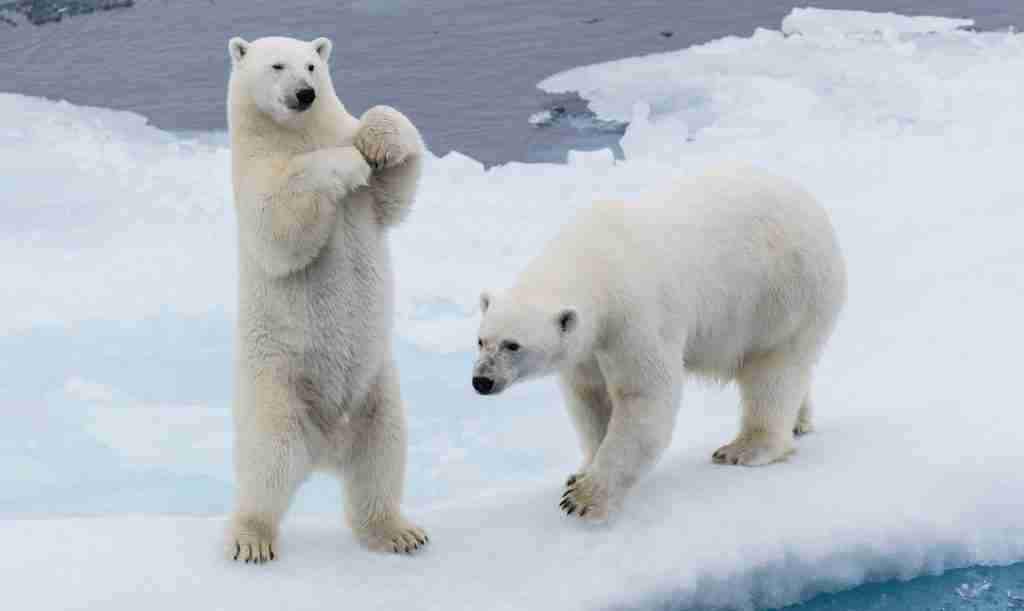
Even though polar bears live in very cold places, they can get too hot easily. This is because they have thick fur and fat to keep warm.
So, instead of feeling too cold, they often feel too warm and need to cool down. It’s like wearing a winter jacket on a sunny day.
21. Polar bears’ gestation period can last anywhere from 195 to 265 days.
When it comes to having babies, polar bears have a unique timeline. Their pregnancy, or gestation period, isn’t fixed. It can last anywhere from 195 to 265 days.
Factors like the bear’s health and food availability can influence this duration. So, while some cubs might be born faster, others take their time, all depending on Mother Nature’s plan.
22. Polar bears have a keen sense of hearing.
Imagine being able to hear the faintest sounds in a vast icy wilderness. Polar bears, with their sharp ears, can do just that.
Their keen sense of hearing is essential in the Arctic, helping them detect prey, communicate, and be aware of their surroundings amidst the vast, silent landscape.
23. Polar bears will wash their face after eating using snow or water.
Have you ever needed a napkin after a messy meal? Polar bears feel the same but with a twist. After they’ve enjoyed their food, they’ll often use snow or water to clean their faces.
Rubbing their muzzles and paws in the snow or splashing in water, they ensure they’re free from leftover bits. It’s nature’s way of giving them a refreshing post-meal cleanup.
24. Polar bear cubs stay with their mothers for over 2 years.
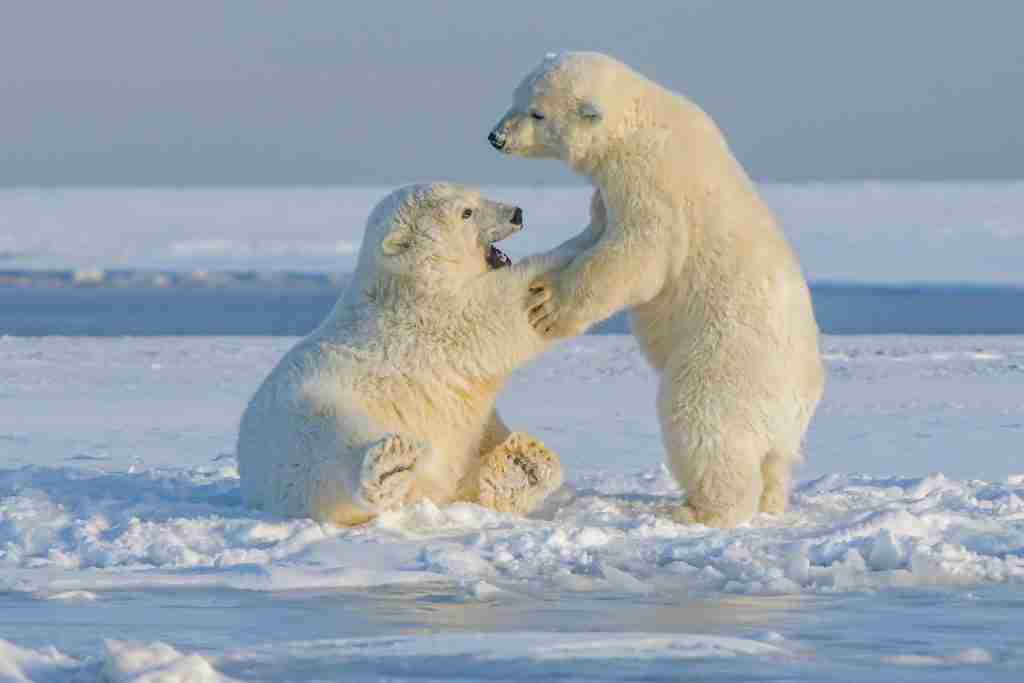
The bond between a polar bear mother and her cubs is deeply touching. After birth, cubs don’t just rush into the icy world on their own.
Instead, they stick close to their mothers, learning and growing under her watchful eye for more than 2 years.
25. Polar bears’ limbs are stocky to conserve heat.
Every detail of a polar bear’s body is tailored for Arctic survival. Take their limbs, for instance. Unlike long and thin legs which lose heat quickly, polar bears have short and stocky limbs.
This design helps them conserve body heat, ensuring they remain warm even in the chilliest of conditions.
FAQs
Polar bears, in the wild, typically live between 20 to 30 years. However, their lifespan can extend up to 30 years or more in captivity due to consistent food availability and lack of threats. Their survival in the wild can vary based on environmental conditions, food sources, and potential dangers.
Polar bears primarily reside in the Arctic region, especially on the sea ice covering the waters surrounding the North Pole. Countries like Canada, Russia, Norway, Greenland, and the U.S. (Alaska) have significant polar bear populations.
Polar bears have a diverse palate, and their diet isn’t limited to seals alone. In fact, they are opportunistic predators, and depending on their location and seasonal availability, they may consume other marine animals such as fish, walruses, and even small whales. Their adaptability allows them to survive by hunting various marine creatures in their harsh Arctic habitat.
Polar bears are known for their close association with sea ice. While they primarily roam and hunt on the sea ice, they are considered marine mammals because they spend a significant part of their life in the Arctic waters. During the warmer months, they may come ashore on land, especially pregnant females who seek out secluded dens to give birth and raise their cubs.
Canada is home to the largest population of polar bears, estimated to have around 60% of the world’s polar bear population. This vast country’s Arctic region provides a substantial and crucial habitat for these magnificent creatures, making it a vital stronghold for their conservation.

